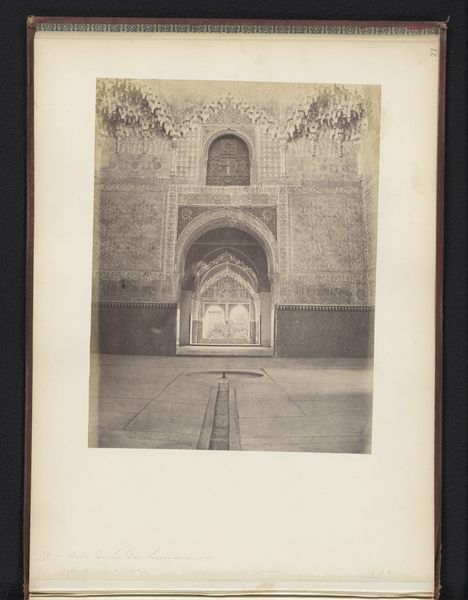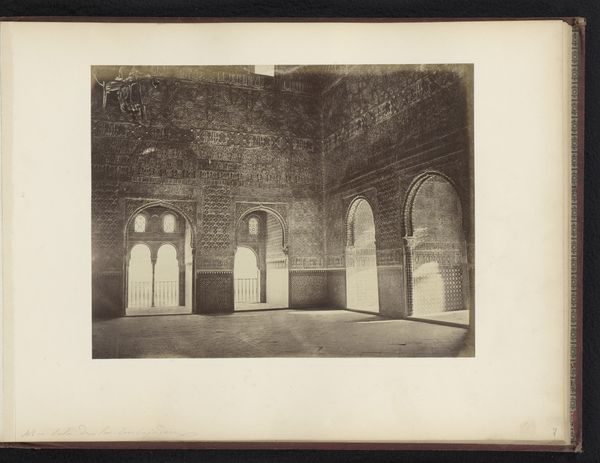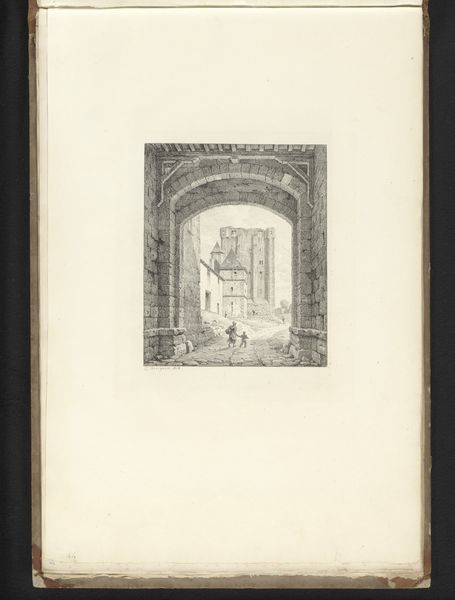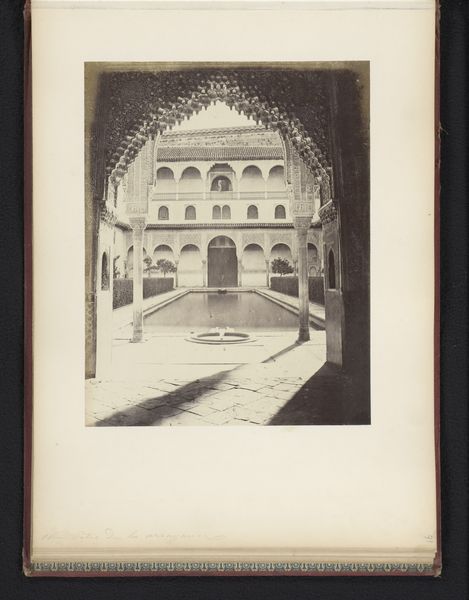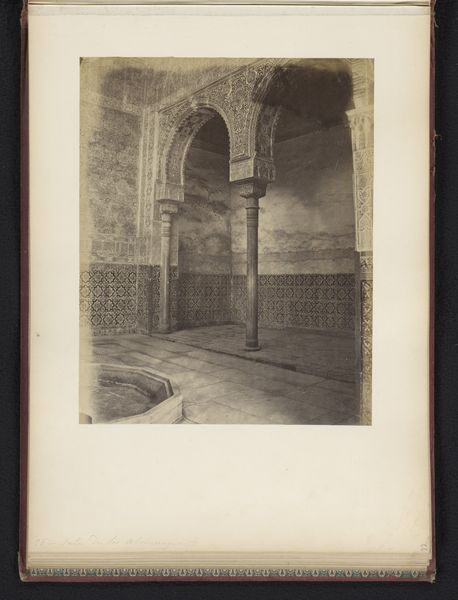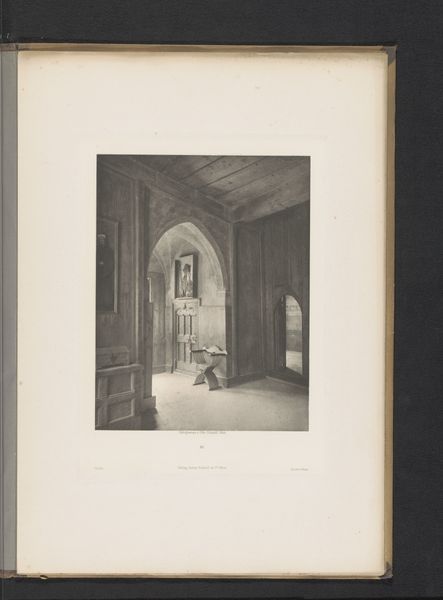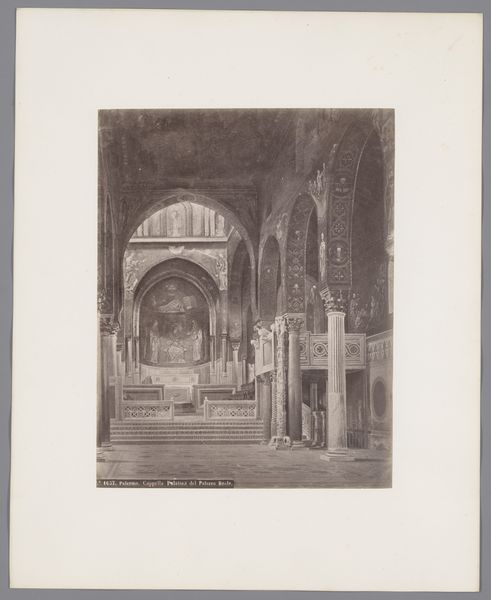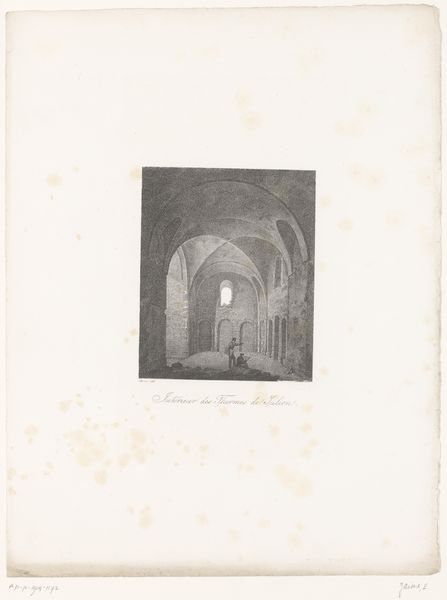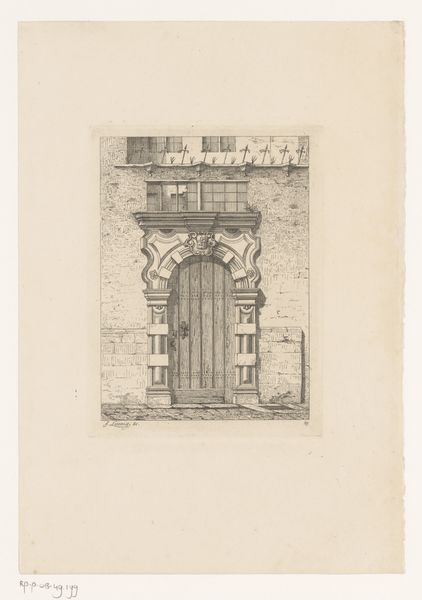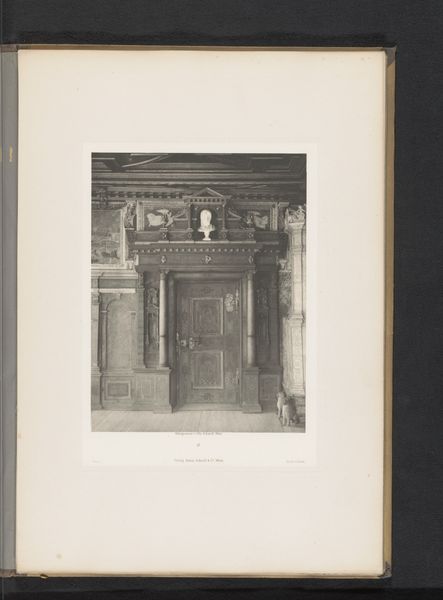
print, photography, architecture
# print
#
sculpture
#
photography
#
carved
#
islamic-art
#
pencil art
#
architecture
Dimensions: height 255 mm, width 190 mm
Copyright: Rijks Museum: Open Domain
Curator: This photograph, taken in 1906 by C Maufsaise, captures the “Interieur van de Salón de Embajadores in het Alhambra te Granada, Spanje.” It's a stunning glimpse into Islamic architecture through the lens of early photography. Editor: The image, rendered in muted tones, evokes a sensation of almost palpable history. The intricacy of the craftsmanship leaps out; I can practically feel the coolness of the stone. Curator: Indeed. Notice how Maufsaise frames the scene through an archway, drawing the viewer's eye to the receding space. This nested framing accentuates the architectural depth and allows for a complex interplay of light and shadow, vital compositional tools. Editor: And look at the materiality evidenced here. The meticulous labor! I imagine artisans hunched over stone, painstakingly carving those intricate patterns. How long did this level of decoration actually take to complete? Curator: The Alhambra's design embraces complex geometric patterns and calligraphic inscriptions. Consider the structural symbolism of these choices: the infinite nature of repeating patterns reflecting divine boundlessness. Editor: Thinking materially though, the patterns also speak to the limitations of labor and resources. This wasn't about abstract perfection; it was about what humans, with limited time and physical capacity, could achieve with stone, chisels, and a whole lot of effort. I also can not stop thinking that this image could easily be a pencil drawing, an imitation with charcoal... it is awesome. Curator: An astute point. Yet, viewed formalistically, consider the photograph’s tonal range, establishing rhythm with contrasting forms and directional orientation. The very precise structure encourages symbolic investigation into a conceptual articulation and resolution between inside and outside spaces. Editor: The outside might present just possibilities depending on whose hands had access to the production. I cannot look beyond the human contribution; and how their collective activity transformed simple materials into an ornate piece. Curator: Absolutely, and in turn, that process affects those patterns of understanding and aesthetic taste. Photography here freezes not just light, but also preserves a fragment of history open for different interpretive lenses. Editor: Quite so, seeing it through multiple lenses truly makes the work come alive! Thanks for joining me in examining it more deeply.
Comments
No comments
Be the first to comment and join the conversation on the ultimate creative platform.
